“Occasionally we have three consecutive days of bad weather, but very rarely four,” Lynne and I used to boast to friends forced to spend winter in the UK. This January proved us wrong, with eight successive days of rain, grey skies, cold temperatures and strong winds before the sun re-appeared, briefly – followed by more rain, “heavy at times” as weather forecasters say. But what was falling as rain in Paleochora was falling as deep snow in the White Mountains, and a drive up to Omalos and Xyloscala gave spectacular views over the Samaria Gorge towards Pachnes, even if further progress – to Kallergi and the path to Gingilos – was impossible.
The return journey to Paleohora (65km/40miles) gave an opportunity to stop in Agia Irini and visit the Figou Gorge. The start of this circular walk of around 3 hours co-incides, almost, with the descent of Agia Irini Gorge. A few metres north, take a track leading down to an old stone bridge (built c.1850) over the river.
This was the original way to the Omalos plateau ; now it’s part of the E4 long-distance path and used by trekkers as an alternative to the difficult section between Sougia and Agia Roumeli. Cross the bridge and walk left, uphill, keeping right at a fork (signed ‘Omalos’) to reach a well-preserved ‘kalderimi’ (an old paved mule trail) climbing pleasantly through a pine forest.
The ‘kalderimi’ gives way to a loose, stony path along a ridge. As it climbs, note the ancient terracing on the hillsides to the right, and enjoy views left down to Agia Irini village. The trail, cairned in places, now bends right, and leads to another stretch of superbly built stone pathway. The highest point, at almost 900m, is usually a fine place to rest awhile and admire the scenery, but on a mid-afternoon in January it was better to keep moving, heavy boots crunching through the snow
The path continues past a water cistern and ruined shepherds’ hut to reach a fork, and a right turn to the south (signposted) into the deep Figou Gorge. Ahead is the route to Omalos, climbing to meet the main surfaced road. During the long years of Turkish occupation ( 1669-1898) the Agia Irini gorge and many others offered shelter for women and children, as well as providing hiding places for Cretan rebels. In 1821 the Jenissary Kaouris entered the gorge to kill women and children concealed there, but was halted by two rebels guarding the entrance. After a hard-fought battle, one was killed after his gun was destroyed, and the other was suffocated when Turks started a fire at the entrance of the cave he was hiding in. But the women and children were able to escape through the Figou Gorge to Omalos and were saved.
The path descends steeply, twisting and turning, with views towards the Irini Gorge below.
The cave (Hirotripa) mentioned above is passed (signed), and the remains of buildings which housed a bandit settlement between 1715 – 1820. A substantial stone hut, a Wardens’ shelter, with fireplace, table and chairs, and almost hidden in the pine trees, is reminiscent of a Scottish ‘bothy’. Early morning in summer after spending a night here would be an unforgettable experience.
Just below the hut, the Figou Gorge joins with Agia Irini, about a kilometre below the entrance. Water was cascading down the river in torrents, more than I’ve ever seen – “dashing and flashing and splashing …. but always descending …. “ , to move Southey’s words here from the Lodore Falls. The wooden footbridge built some ten years ago, which saved a difficult river crossing in icy water, was much appreciated, as was the remaining hot coffee in the flask on reaching the car fifteen minutes later.
EDITOR’S NOTE: This is Bob’s 30th. article on the Explore! blog for The Paleochora Site. I just want to say thank you to Bob on behalf of all of the regular readers for this great resource.


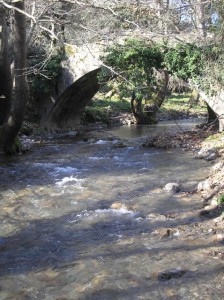
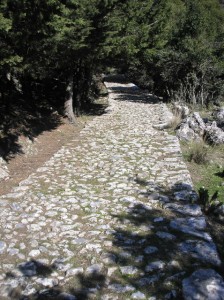
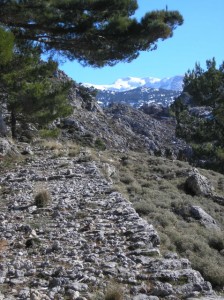
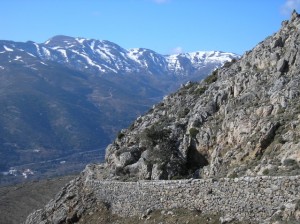
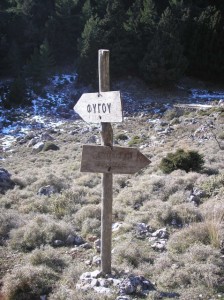
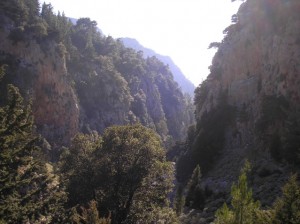

2 comments
I could not agree more with the editor’s comments. The articles are informative, beautifully written and illustrated and invite participation. Thank you
I third that! Wonderful to see those stunning pictures – don’t think I’m visiting Crete this year – these articles are the next best thing – ahh feels like I’m there. Thank you Bob and, of course Web Master x